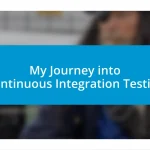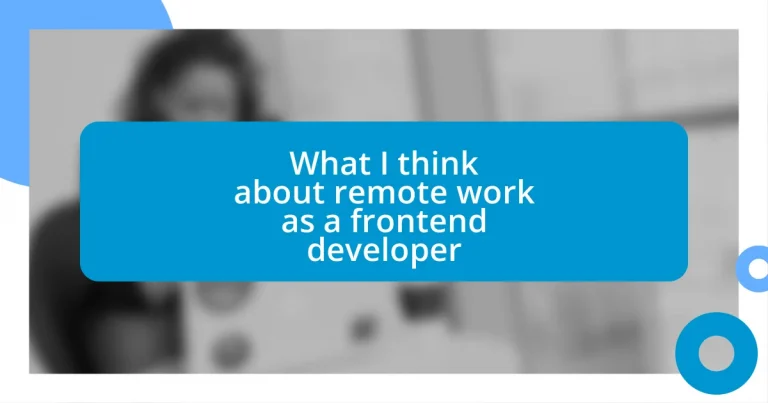Key takeaways:
- Isolation and communication challenges are significant issues in remote work, affecting motivation and clarity.
- Utilizing collaborative tools like GitHub, Figma, and VS Code enhances team engagement and productivity.
- Establishing clear boundaries and scheduling breaks are essential for maintaining work-life balance and preventing burnout.
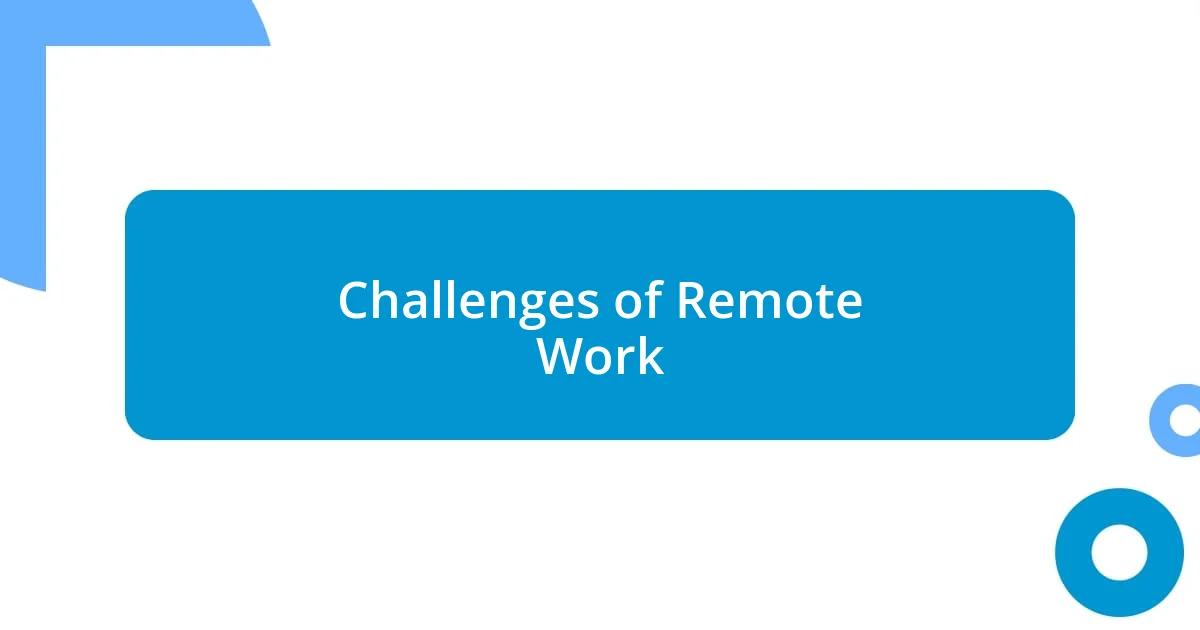
Challenges of Remote Work
One of the most significant challenges I’ve faced as a frontend developer working remotely is isolation. There are days when the lack of casual office chatter makes me feel disconnected from my team. Have you ever noticed how a simple coffee break can spark creativity? Without those spontaneous interactions, it can be tough to stay motivated and engaged.
Additionally, managing work-life boundaries has proven to be a constant battle. I often find myself working late into the night, with my laptop still open while cooking dinner. It’s so easy to blur the lines between professional and personal life when your workspace is just a few steps away from your living room. This can lead to burnout, something I’ve personally experienced more than once.
Lastly, I’ve noticed communication can suffer without face-to-face interaction. It’s one thing to send a quick Slack message, but it’s quite another to pick up on visual cues during a meeting. Sometimes, I’ve felt disheartened when my ideas don’t land as intended, leaving me wondering if I fully conveyed my vision. Have you ever felt like your true contributions are lost in translation? It’s moments like these that remind me of the importance of clear and open dialogue in a remote setup.
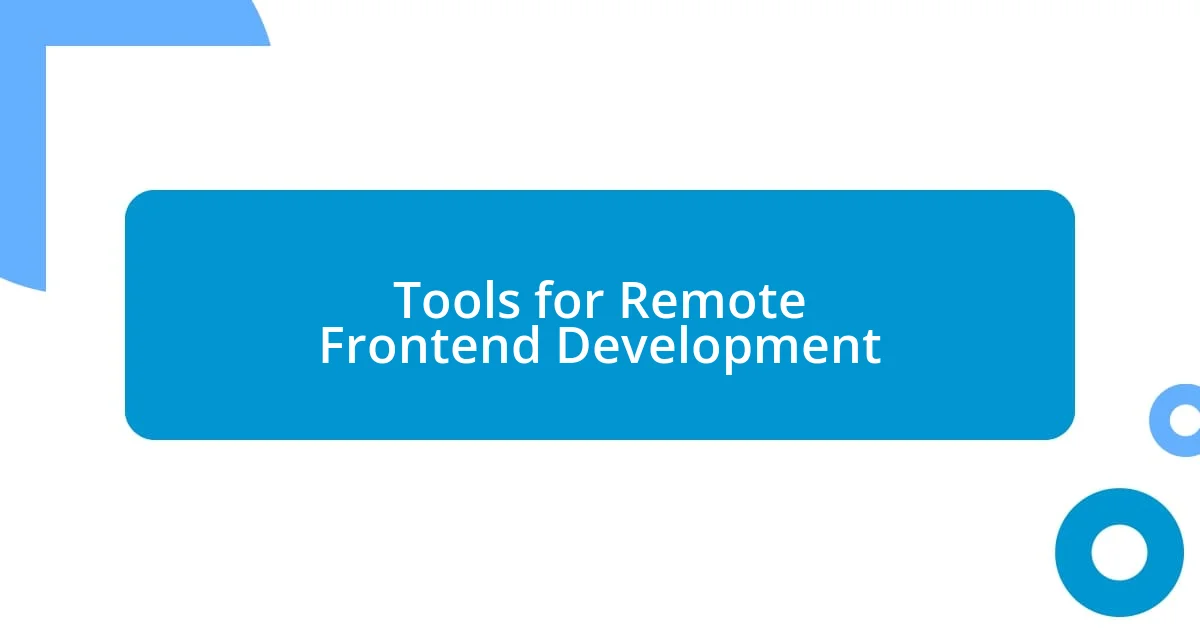
Tools for Remote Frontend Development
Having the right tools is crucial for remote frontend development. I rely heavily on code collaboration platforms like GitHub, which not only allow me to manage version control but also foster a sense of teamwork, even at a distance. I remember the first time I collaborated on a project using GitHub with colleagues from different countries; it was such an eye-opener. We were able to leave comments on each other’s code in real-time, which helped simulate that office environment where you could just casually shout out a quick suggestion.
On the lighter side, I also treasure using design tools like Figma. It’s fantastic how it’ll let multiple people work on design simultaneously and chat within the app. I once had a frustrating day trying to describe a layout over email, and it was only after switching to Figma that everything clicked. We were able to visualize changes on the spot, and it fostered an exciting environment where ideas flowed freely.
Another indispensable tool for me is VS Code. Its extensive library of extensions allows me to customize my development environment according to my workflow. Just recently, I discovered a new extension that has greatly enhanced my productivity. I was amazed at how much time I saved by automating repetitive tasks. It’s these small efficiencies that make a big difference in my daily routine, keeping me enthusiastic about my projects even from home.
| Tool | Description |
|---|---|
| GitHub | Version control and collaborative coding platform that enhances team collaboration. |
| Figma | Design tool for collaborative UI/UX design that facilitates real-time feedback and interaction. |
| VS Code | Highly customizable code editor with numerous extensions to improve productivity. |
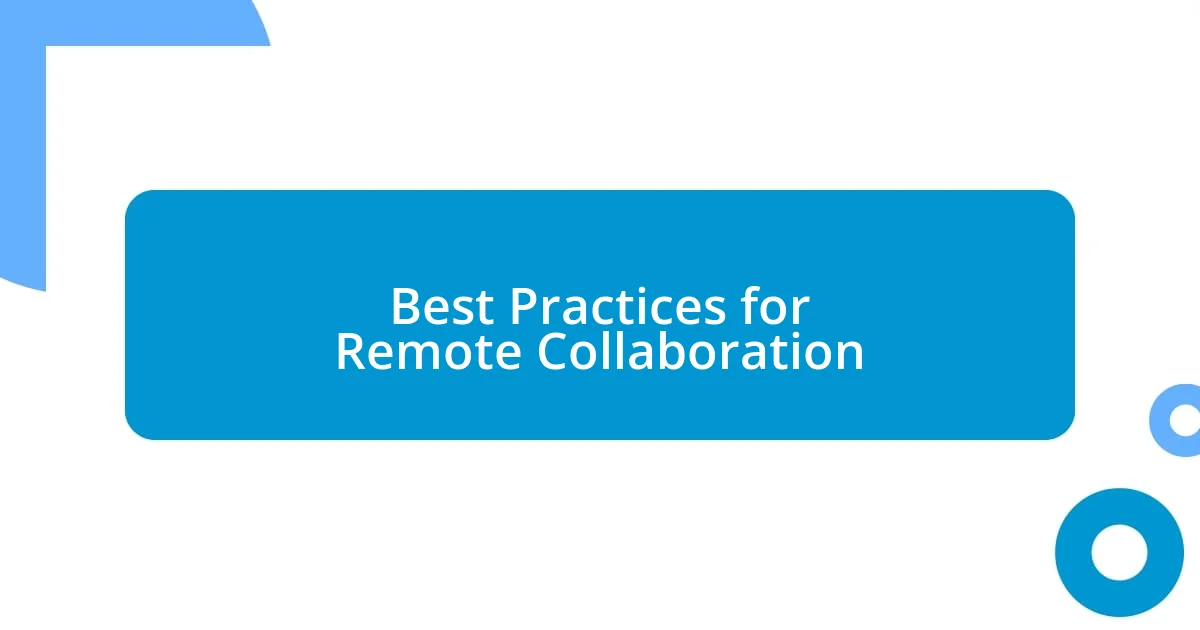
Best Practices for Remote Collaboration
Effective remote collaboration as a frontend developer hinges on maintaining clarity and connection with your team. I often emphasize the importance of regular check-ins—whether they’re daily stand-ups or weekly retrospectives. There’s something reassuring about discussing goals and progress, even if it’s just through a webcam. I recall a time when my team decided to have weekly video calls; it transformed our dynamic. Suddenly, we could see each other’s reactions, boosting morale and making it much easier to hash out ideas.
To foster better remote collaboration, consider these best practices:
- Establish Clear Communication Channels: Use dedicated platforms like Slack or Microsoft Teams for different project conversations, reducing confusion.
- Set Regular Updates: Schedule consistent meetings to keep everyone aligned and informed about project status.
- Embrace Video Calls: Whenever possible, opt for video over text. It’s crucial for picking up on visual cues and fostering personal connections.
- Utilize Collaborative Tools: Make use of software like Trello or Asana to track tasks and maintain visibility within the team.
- Encourage Feedback: Create an open atmosphere where team members feel comfortable sharing their thoughts and suggestions for improvement.
These strategies not only streamline our workflow but also help in cultivating a supportive remote work culture. I can’t stress enough how much a little effort in communication goes a long way to alleviate feelings of isolation.
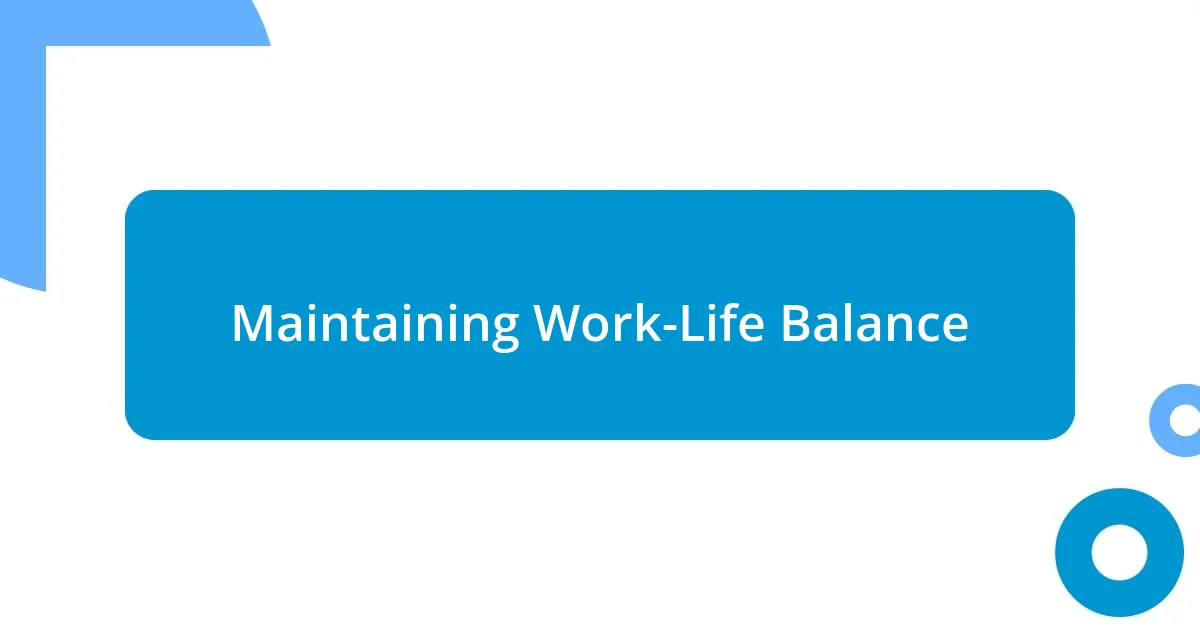
Maintaining Work-Life Balance
Maintaining a work-life balance is indeed a challenge, especially when my home transforms into my office. I’ve had days where I found myself working late into the evening, just because my laptop was close by and I felt “in the zone.” It was during one of those late-night coding marathons that I realized how important it is to set firm boundaries. I started putting a timer on my work sessions, and when that timer goes off, I shut down my laptop. It’s amazing how just that small act can signal to my brain that it’s time to decompress.
I also make it a priority to schedule breaks throughout my day. Initially, I ignored the need for breaks, thinking I’d be more productive if I kept pushing through. But on a particularly exhausting day, I decided to step outside for a quick walk. It turned out to be a game changer; not only did my mood improve, but I returned invigorated and ready to tackle the next set of tasks. Have you ever experienced the fog of burnout creeping in? It’s a harsh reminder that even the most passionate developers need to step back and recharge.
On the weekends, I’ve adopted a no-work policy, which has had a surprisingly positive impact on my overall productivity during the week. I remember a Friday that felt unusually chaotic, filled with last-minute adjustments and deadlines. Instead of dragging that stress into the weekend, I decided to disengage entirely from work-related tasks. Rejuvenating with activities I love, like hiking or trying out a new recipe, brought me back to a much sharper mindset come Monday. It strikes me how difficult it can be to truly unwind when work is just a room away, yet this separation is vital for keeping my passion for development alive.
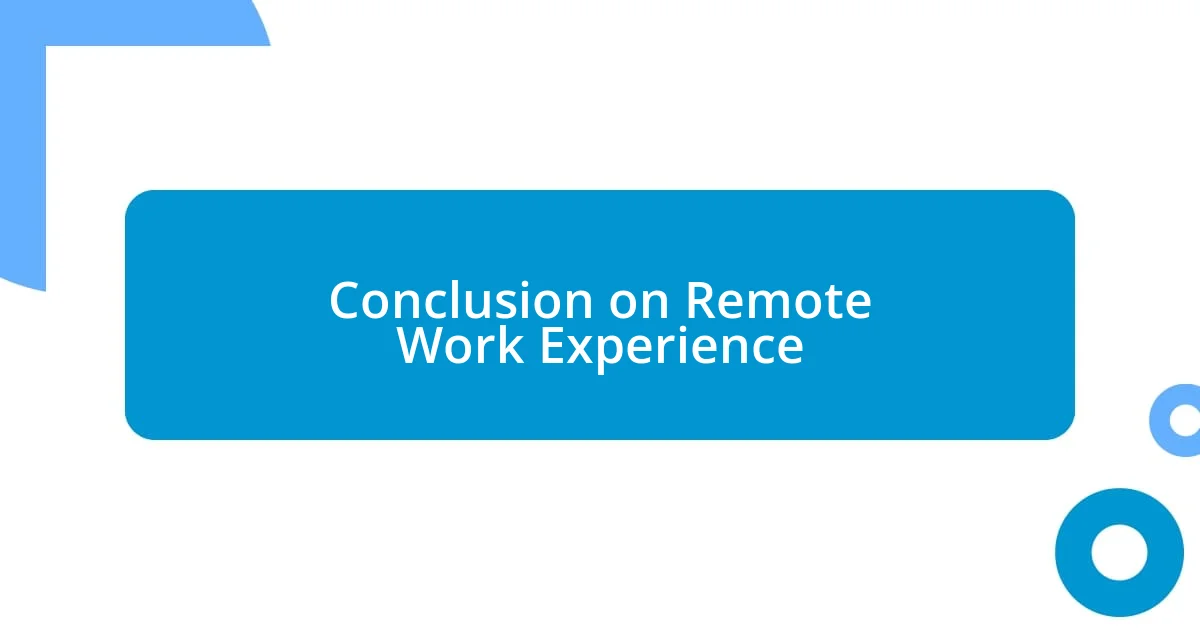
Conclusion on Remote Work Experience
Reflecting on my remote work experience as a frontend developer, I can say it’s a mixed bag but ultimately rewarding. I’ve frequently encountered the joy of flexibility paired with the challenge of self-discipline. There are days when juggling multiple tasks feels overwhelming, and I often find myself wondering: how do I maintain my productivity while enjoying this newfound freedom? One way I’ve tackled this is by creating a personalized work environment that inspires me, like adding plants and using my favorite ergonomic chair. When I step into that space, it’s like flipping a switch; suddenly, I’m in “work mode.”
One notable aspect of remote work is the opportunity to connect with colleagues from different backgrounds. I remember a project where my team involved members from across three continents, each bringing unique perspectives to our work. That experience made me realize that, even through a screen, we can build strong relationships that enhance collaboration. Have you ever thought about how diverse teams can influence creativity? It’s incredible! It’s also a reminder to appreciate the cultural nuances that can enrich our projects.
By embracing remote work, I’ve found that my sense of community has evolved. Though I miss the casual chats by the water cooler, I’ve learned to use dedicated virtual spaces to rekindle that sense of togetherness. I often join casual coffee breaks with my team, where we share tips, thoughts, and even silly memes. These moments of levity have proven invaluable—who knew that laughing over a shared joke could foster bonding and increase engagement? It’s a little thing, yet it makes a big difference in how connected I feel, even when working from afar.






